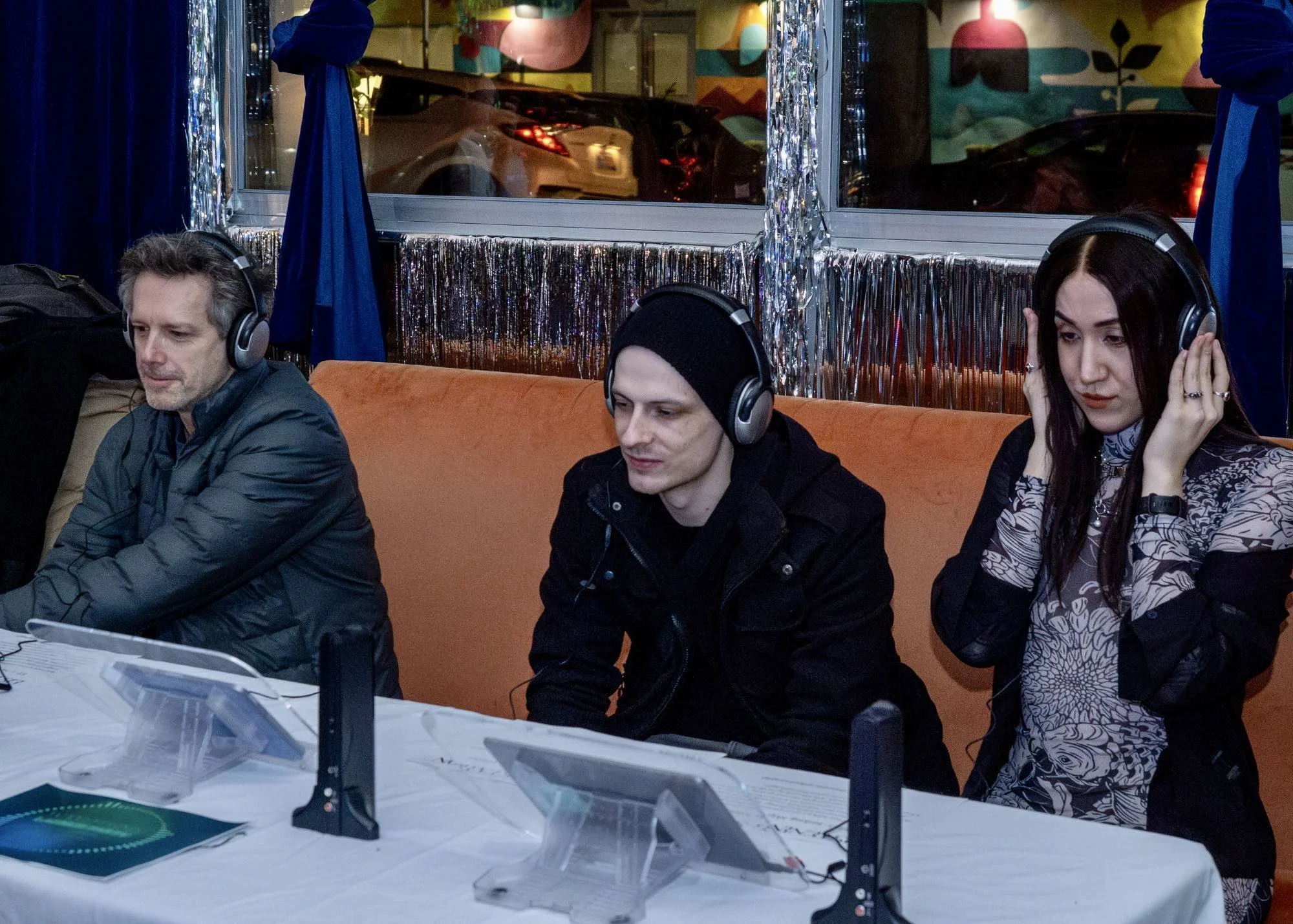Theatre review: Powerhouse performances give fresh currency to 9 to 5: The Musical
Driven by humour and Dolly Parton tunes, Royal City Musical Theatre’s inspired take on ’70s-era office politics is boldly relevant
Royal City Musical Theatre's 9 to 5: The Musical. Photo by Moonrider Productions
Royal City Musical Theatre presents 9 to 5: The Musical at the Massey Theatre to May 11
ROYAL CITY MUSICAL THEATRE has a great new look: instead of presenting its usual annual offering of a beloved classic Broadway musical, the company has tackled a contemporary show—9 to 5: The Musical. Under the choreography of the revered Valerie Easton and her codirection with Chris Adams, RCMT demonstrates its versatility and ample ability to stay relevant. 9 to 5 is a fun musical-theatre extravaganza with bold messages of female empowerment, workplace equality, and following one’s heart at any stage in life, set to a score by Dolly Parton herself.
From start to finish, 9 to 5 is a visual, sonic, and emotional treat. Emily Dotson’s gorgeous pastel-coloured set design, matched with Rob Sondergaard’s equally beautiful lighting, whisks us away to a grand vision of late-1970s corporate America—a kind of adult version of Matilda with larger-than-life filing cabinets and a menacing photocopier. There’s also a nod to Hairspray, as 9 to 5 begins with an upbeat, morning routine–themed number that starts in the bedroom and progresses out into the bustling city street.
But under all the fun, there’s purpose. The opening number introduces us to Violet (Irene Karas Loeper), Judy (Madeleine Suddaby), and Doralee (Maia Beresford). These three women have at least two things in common: they’re each deserving of much more in life, and they all work at Consolidated Industries. In fact, it’s Judy’s first day. But after Judy miserably fails an introductory typing test given by senior office manager Violet, it’s uncertain how long Judy will last.
Judy does get leniency from Violet when she explains that she’s spent the past many years as a housewife, only to learn that her husband Dick has recently left her for his secretary. In a supercharged morning of onboarding, Judy also meets the sweet and perky Doralee—whom, according to Violet, nobody in the office likes. Judy’s employee-orientation experience worsens when she’s introduced to Franklin Hart Jr., president of Consolidated and the epitome of a misogynistic, self-absorbed boss, played with appropriate sneeziness by Dustin Freeland.
Amid a stressful office environment led by the condescending Hart, each of the three female leads is burdened by a different obstacle. Despite her experience and high performance, Violet has reached the glass ceiling in a company ruled by an old boys’ club. Doralee is resented by the rest of the office because of false rumours that she’s sleeping with Hart. And Judy doesn’t have any self-confidence now that she’s out in the world alone for the first time. However, when an accident sets the situation ablaze, Violet, Judy, and Doralee suddenly need to join forces in a game-changing turn of events.
The show’s casting is terrific. Karas Loeper owns the stage with a confidence that glows with likeability and occasional vulnerability—the latter of which can be seen when she grapples with a possible romance between her and junior accountant Joe (a charming Gabriel Macdonald), which brings up the social stigma surrounding women dating younger men, when the reverse is often a non-issue.
Suddaby is captivating as the initially meek Judy, who gradually changes into a force to be reckoned with. Having played such roles as Adelaide in Guys and Dolls and the voice of the plant Audrey II in Little Shop of Horrors, Suddaby is known in the Vancouver theatre scene for her showstopping performances. But her performance here as Judy hits on a deeper level. No longer a 1920s showgirl or a demonic plant, Suddaby portrays a person in a situation that many in the audience may be able to relate to, either directly or tangentially. Suddaby’s solo “Get Out and Stay Out” is incredible for her powerhouse vocals, as well as for the song’s inspiring message.
As Doralee, Beresford radiates southern charm, supported by underlying integrity and strength. She offers wonderful storytelling and stylistically nuanced vocalization in the country ballad “Backwoods Barbie”, while bringing fierce dynamism to songs such “Shine Like the Sun”, where she certainly does shine alongside Karas Loeper and Suddaby. Another standout in the show is Jennifer Suratos, as Roz, Hart’s devoted executive assistant. Surantos electrifies with her phenomenal vocals in her solo “Heart to Hart”, accompanied by a sassy group of dancers performing Easton’s inventive choreography, set in an office bathroom.
Humour drives this show, and Beresford, Karas Loeper, and Suddaby lead the way with superb comedic timing rooted in authentic characterizations—ultimately making the humour come across genuinely. And while the plot itself is by no means realistic, the issues discussed here are. Topics such as the gender wage gap, onsite childcare, flexible work hours, and overall employee wellness were relevant back in the 1970s and still hit hard today.
Yes, this show is a spectacle, complete with fantasy dance sequences performed with polish and pizzazz by the cast, under the guidance of dance captain and assistant choreographer Joscelyne Tamburri. But at the heart of 9 to 5 are issues that many audience members will be able to relate to first-hand. The story speaks to the here and now, and at its core lies the message of valuing one’s self-worth—not just eight hours a day, but 24/7. ![]()

































